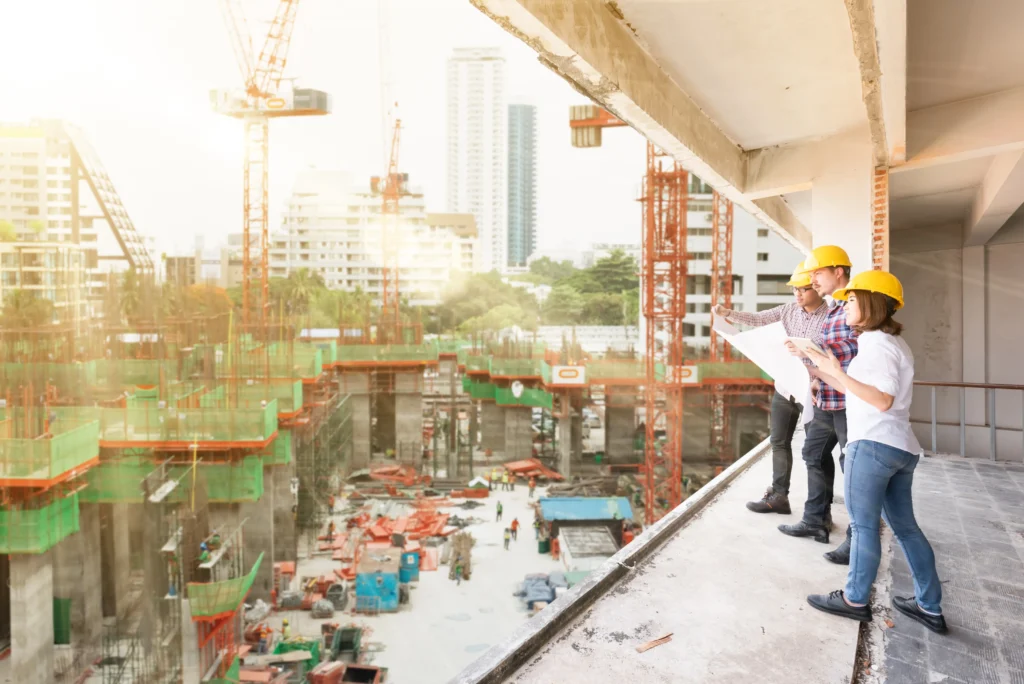Behind every gleaming new commercial building lies a labyrinth of unexpected expenses that can make even seasoned developers break into a cold sweat.
While the visible costs – those shiny materials and busy construction crews – are easy to calculate, it’s the shadowy financial surprises lurking in the corners that often determine whether your project soars or stumbles.
Let’s illuminate these hidden cost centers that rarely make it into the glossy project presentations.
The Money Pits Before the First Brick
The Archaeological Adventure

No Hidden Fees When Working With DeGeorge Development
Picture this: Your perfect development site suddenly transforms into an impromptu archaeological dig when workers discover Native American artifacts or historic foundations. These unexpected finds can freeze your project faster than winter concrete, triggering costly historical preservation studies and redesigns. Smart developers now employ ground-penetrating radar and historical research teams before breaking ground, treating every site like a potential museum piece waiting to be discovered.
The Neighborhood Negotiation
Welcome to the era of community activism, where local residents have become unofficial project partners. That parking garage you planned? The neighbors might demand a green roof to preserve their views. Those delivery routes? Expect to fund traffic calming measures throughout the surrounding streets. Modern developers find themselves budgeting not just for construction, but for community benefits packages that can rival the cost of smaller buildings.
The Infrastructure Inheritance
The Utility Universe
Imagine inheriting a century’s worth of infrastructure challenges. That’s exactly what happens when developers tap into aging city systems. Those innocent-looking utility connections can unveil a Pandora’s box of expenses. Cities increasingly view new developments as opportunities to upgrade their infrastructure, often at the developer’s expense. You might start planning to connect to a water main but end up funding a neighborhood-wide utility upgrade.
The Soil Soap Opera
Beneath that innocent-looking dirt lies a potential drama starring contaminated soil, unstable substrates, or long-forgotten underground structures. Some developers have discovered entire buried buildings or massive fuel tanks that weren’t on any historical records. Others have found themselves dealing with soil that behaves more like Jell-O than solid ground, requiring expensive stabilization techniques that weren’t in the original budget.
The Regulatory Rollercoaster
The Code Compliance Chase
Building codes evolve faster than smartphone technology these days. That energy-efficient design you planned last year? It might already be obsolete under new regulations. Smart developers now include “regulatory evolution contingencies” in their budgets, acknowledging that today’s state-of-the-art might be tomorrow’s non-compliant nightmare. They’re essentially betting on future regulations, like high-stakes gambling with building codes.
The Permit Purgatory
Welcome to the world of permit ping-pong, where applications bounce between departments like a bureaucratic tennis match. Beyond the obvious permit fees lurk the true costs: carrying charges on land and materials while waiting for approvals, staff time spent pursuing permissions, and consultants hired to navigate increasingly complex requirements. Some developers now employ permit expeditors who specialize in nothing but shepherding applications through the maze of municipal departments.
The Timeline Twisters
The Supply Chain Saga
Global supply chains have become more unpredictable than weather forecasts. Smart developers now treat material procurement like commodities trading, buying and storing critical materials months in advance. This creates new costs in storage, security, and insurance – not to mention the financial impact of tying up capital in materials that might sit unused for months.
The Coordination Carnival
Modern construction sites resemble carefully choreographed ballets, where dozens of subcontractors must perform their parts in perfect sequence. When one trade falls behind schedule, it creates a domino effect of delays and additional costs. Some developers have started using artificial intelligence to optimize scheduling, treating their construction timeline like a complex algorithm that needs constant adjustment.
The Human Element
The Skilled Labor Scavenger Hunt
Finding skilled construction workers has become harder than locating desert water. Smart developers are now creating their own training programs or partnering with trade schools to develop talent pipelines. These investments in workforce development become another hidden cost – one that’s necessary for project success but rarely appears in initial budgets.
The Technology Tangle
As construction technology advances, the costs of staying current multiply. From drone surveys to 4D BIM modeling, each new tool promises efficiency but demands investment in both equipment and training. The modern construction site requires as much digital infrastructure as physical infrastructure, creating a whole new category of technology-related expenses.
In the high-stakes game of commercial development, success often depends not on avoiding these hidden costs but on anticipating and planning for them. The smartest developers understand that every shiny new building stands on a foundation of carefully managed unexpected expenses. They treat their contingency budgets not as safety nets but as strategic tools, knowing that in commercial construction, the only real surprise should be when there are no surprises.
The key isn’t just having deep pockets – it’s having the foresight to understand that commercial construction is as much about managing the invisible as it is about building the visible. By acknowledging and planning for these hidden costs early in the development process, smart developers can transform potential project-killers into manageable challenges, ensuring their vision rises not just from the ground, but from a solid foundation of financial reality.




